On July 20th 1969, history was made and humankind’s fascination with space was kicked into overdrive. NASA Apollo mission 11 was the first to take man to the surface of the Moon. This year marks the 50th anniversary of this incredible achievement and to celebrate LEGO® have been working with NASA to create a special Creator Expert set. The NASA Apollo 11 Lunar Lander, is the landing craft which touched down upon the surface of the Moon and helped to bring back various rock samples. The LEGO set is a faithful recreation of the LEM craft and comes complete with a Moon surface display base and two NASA astronaut Minifigures. I’ve had the privilege of being able to get the set early and give it a review. But how does it shape up? Read on to find out.

Product Description
Celebrate man’s first moon landing with this LEGO® Creator Expert 10266 NASA Apollo 11 Lunar Lander building set—developed in cooperation with NASA to mark the 50th anniversary of a historical event that captivated the world. This collectible model features a highly detailed replica of Apollo 11’s Eagle lunar module, plus a depiction of the lunar surface, complete with crater, footprints and a U.S. flag. The descent stage comes with gold-colored landing pads and panels, opening camera and laser hatches, and a ladder, while the ascent stage has a detailed interior with room for 2 astronauts. Finished with an Apollo 11 Lunar Lander nameplate, this display model makes a great centerpiece for the home or office and provides a challenging and rewarding building experience full of nostalgia. Includes 2 astronaut minifigures with NASA decoration and golden helmets.
- Set Name: NASA Apollo 11 Lunar Lander
- Set Number: 10266
- Pieces: 1087
- RRP: £84.99/$99.99/€89.99
- Measurements: 20 cm high, 22cm wide and 20cm deep.
- Minifigures: Apollo 11 NASA Astronauts x2
- Availability: LEGO Brand Store, shop.LEGO.com (Available June 1st)
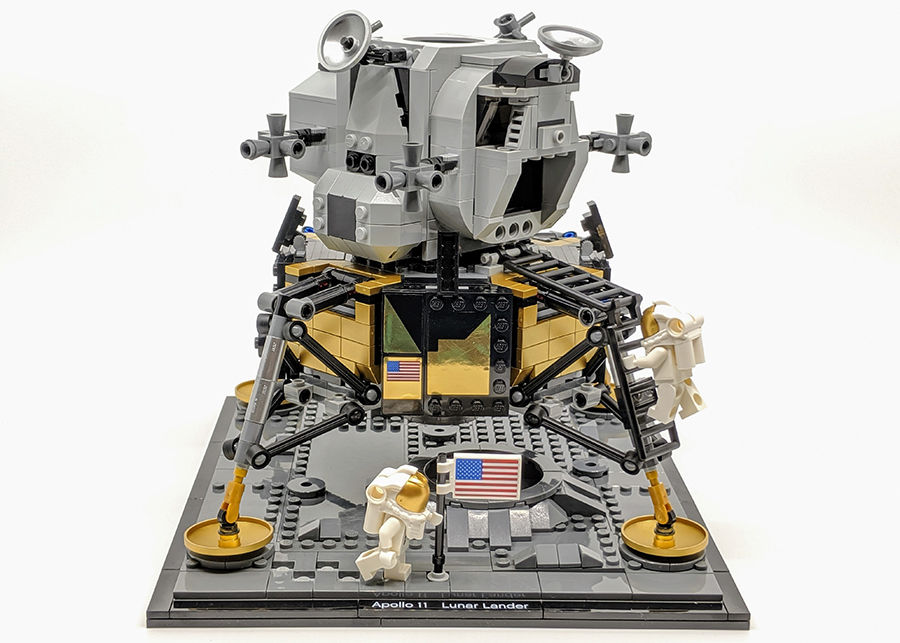
The Build
One of the nice features of the set is the first section you build, a LEGO recreation of the Moon’s surface. This acts as a display base for the Lunar Lander. With circular 4×4 sections upon which the feet of the Lunar Lander can be positioned. A combination of studded and flat plates, along with brick-built craters and sloped elements, all do a decent job of recreating the lunar landscape. The display base is also similar to those included with many of the LEGO Architecture sets. So it’s bordered with a black strip of flat plates and a printed element featuring the name of the set. One thing I appreciate about this part of the build is that it is nice and stable. Often large surface bases can be a nice loose, especially without any sort of structure built on top on them. This is nice, solid and stable enough to move around even with the set sitting atop it. Of course it wouldn’t be complete without the US flag planted in the surface of the display base.

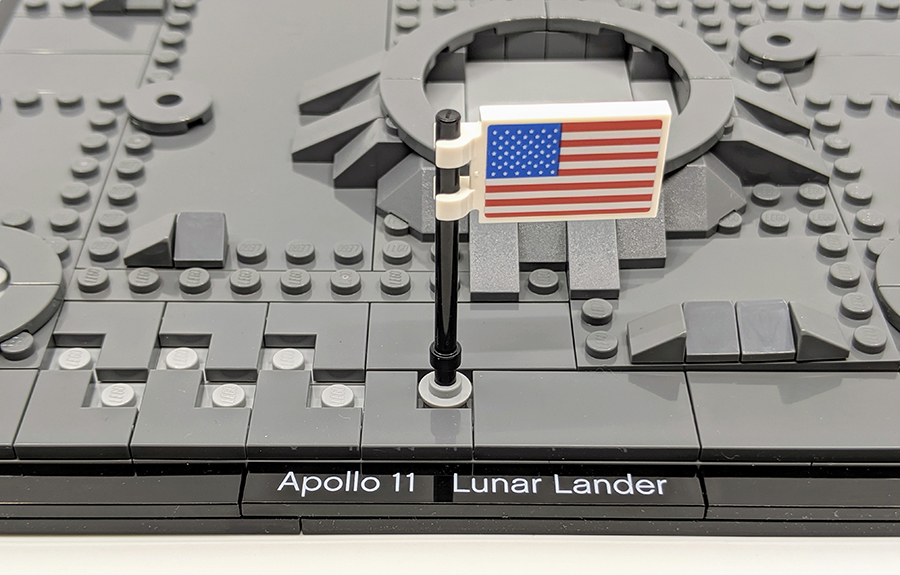
With the display base complete, it’s time to tackle the Lunar Lander itself. From the look of the completed set, it doesn’t instantly scream a complex build, but much of the sets inner workings are where you find much of the technical stuff. It’s all built as sections which fit together through a clever connection of 1×2 cross hole bricks and ball joint ended shaft elements. It’s not a connection I’ve seen before but it’s perfect for helping to achieve the necessary configuration of the four large base modulars. Although the inner section of this part of the build is hidden away once the rest of the set it built around it, the four large fuel tanks have been incorporated into the build.
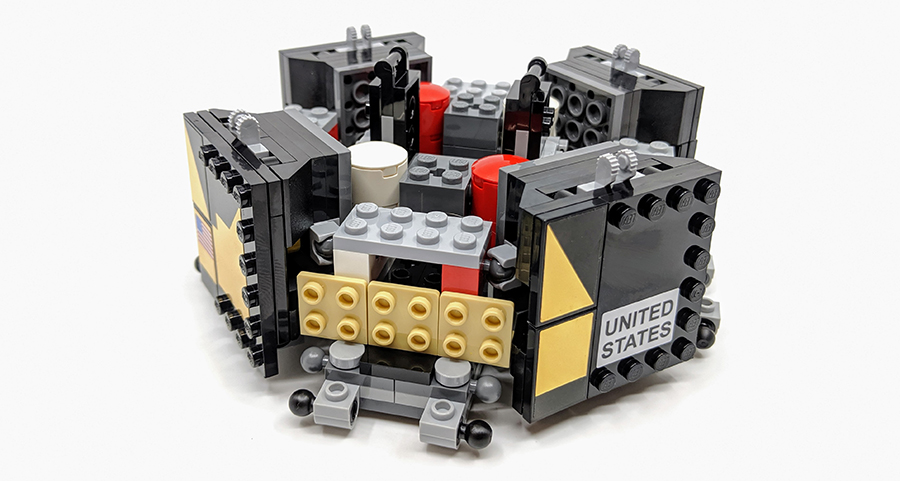
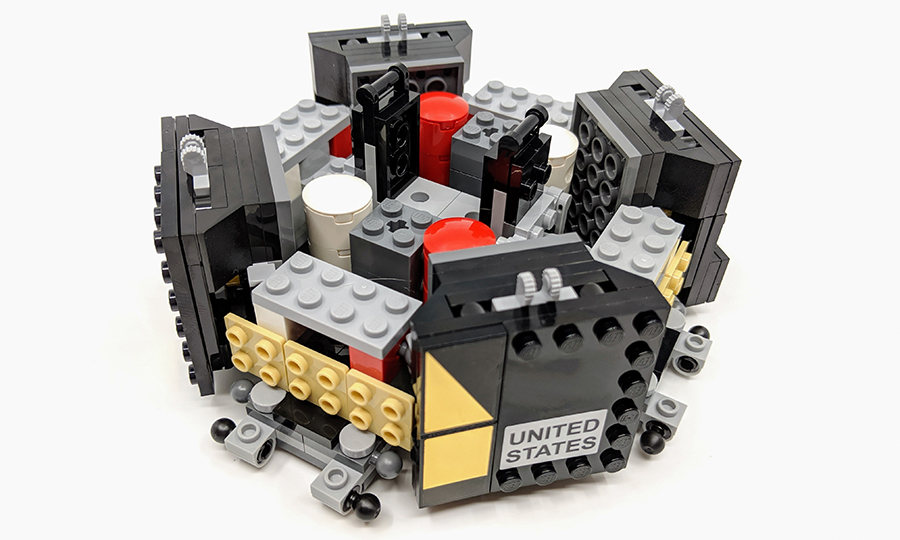
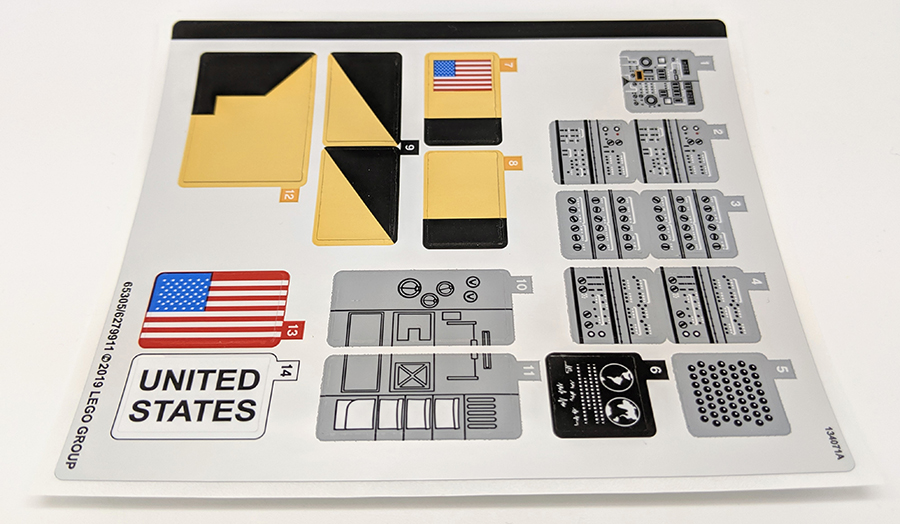
On the outer sections of the Lunar Lander engine area are four black box like sections, these appear identical but two of them feature ‘hidden’ flip down sections. Which actually help as a visual marker as you build. One includes a recording device and the a seemingly pointless little element. This is actually an important part of the lunar mission, it’s a laser reflector, which was placed on the Moon, to help measure its distance from Earth. Some of the detailing found around this section is achieved with stickers. These are printed on a shiny material, which makes them a little easier to apply but also a magnet for fingerprints.


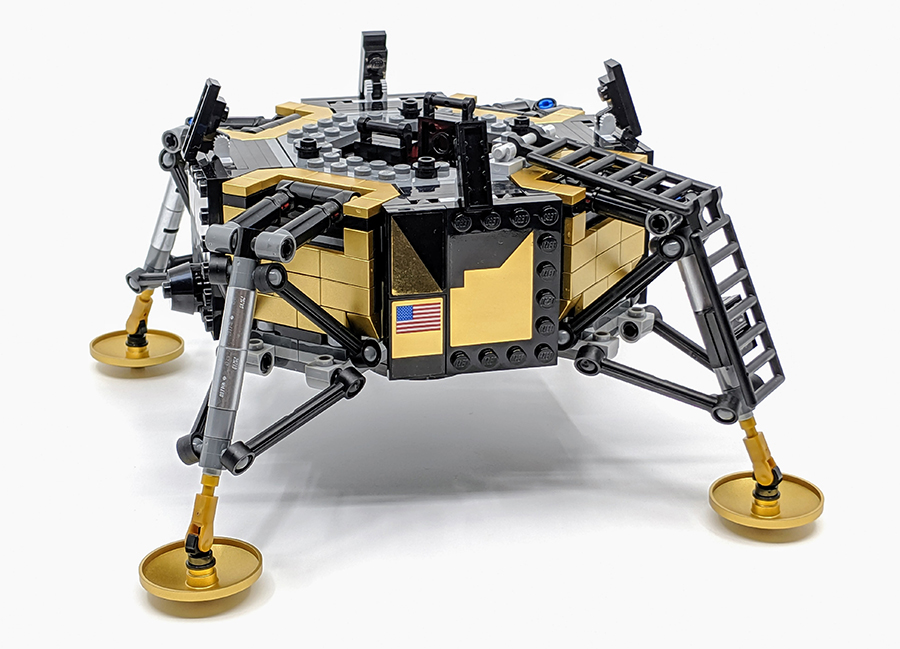
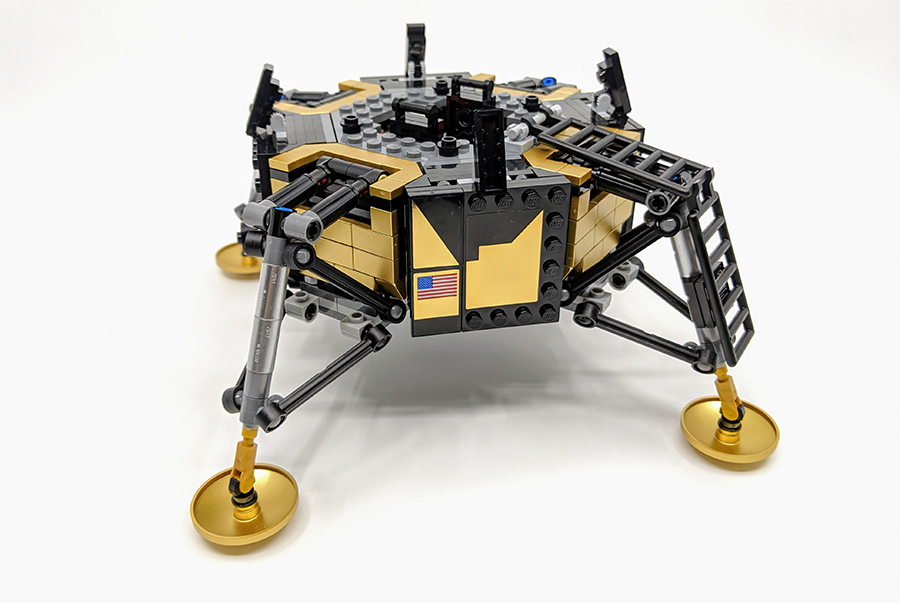
The central section is further bulked out with those all important spider-like legs, which helped the Lander to safely touchdown upon the Moon’s rocky surface. These use a selection of the Technic elements to achieve the desired look and are connected via a series of axle pins and track rods. These can be a little tricky to connect at the end nearest the body of the Lander, as it’s quite the tight spot, but if angled correctly they can be pushed into place. Each area around the legs, uses a mix of shiny gold-coloured plates. These replicate the special heat shielding and much of the elements are appearing in this colour for the first time. The same colouring is used on the domed plates used for the landing pads. This part of the build is certainly the most tricky and time consuming, thanks to the previously mentioned tight spots and large number of small elements.
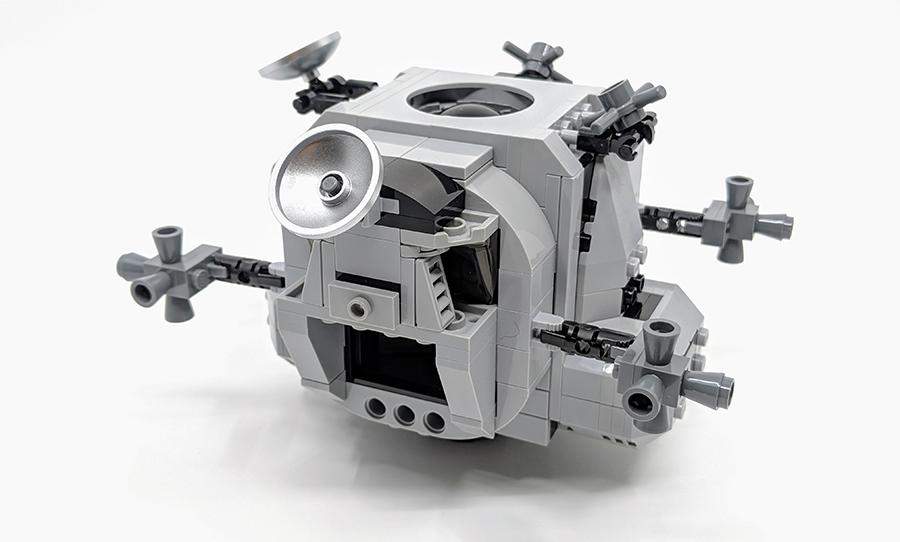
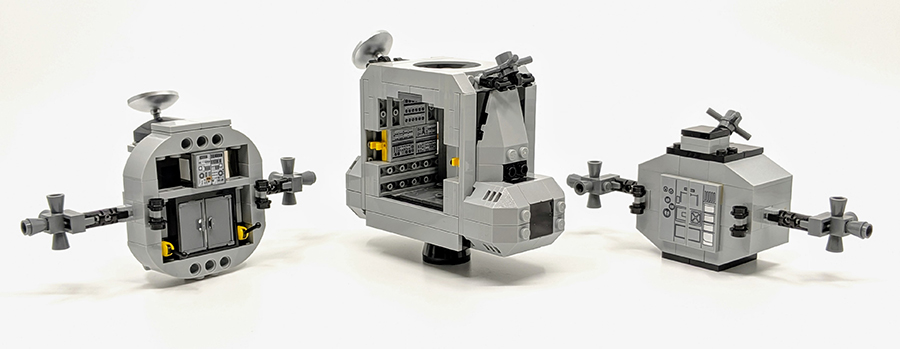
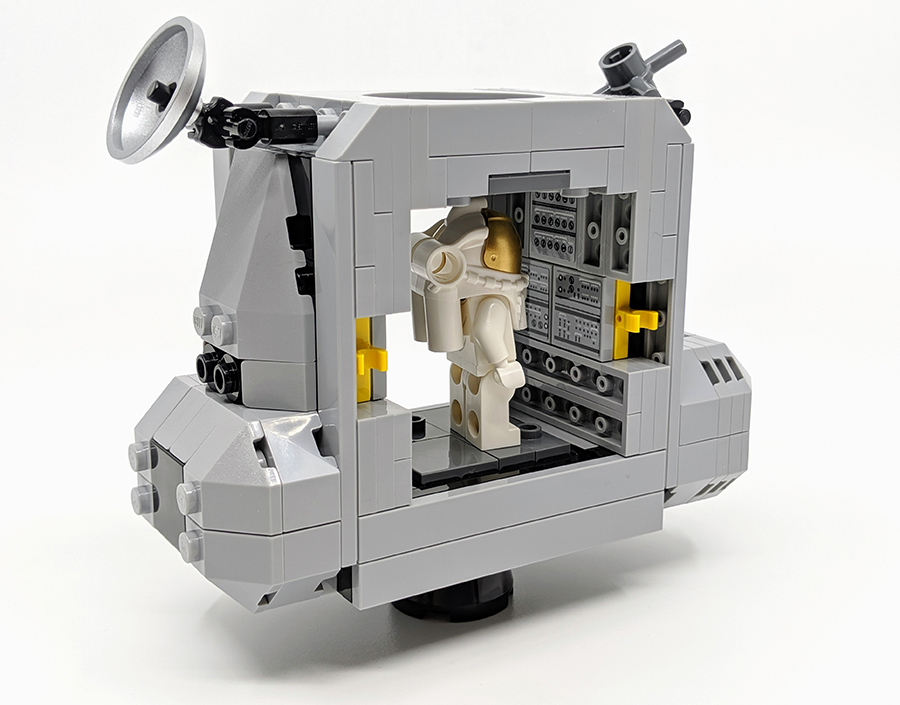
The final section you build in the Lander’s control capsule. This is built in three different sections, the largest of which is the central part. This has enough room to place a Minifigure, two at a push and also features a number of control panels used by the Astronauts to descend to the moon and take various readings from the surface. One thing I really like about this section of the exposed underside of the plates, these add to the visual impact of the control panel. The two outer sections feature the hatch on one side and bulker research modular on the other. The appearance of this section is a little muted, but it’s a faithful take on the Eagle Lunar Lander containment modular.
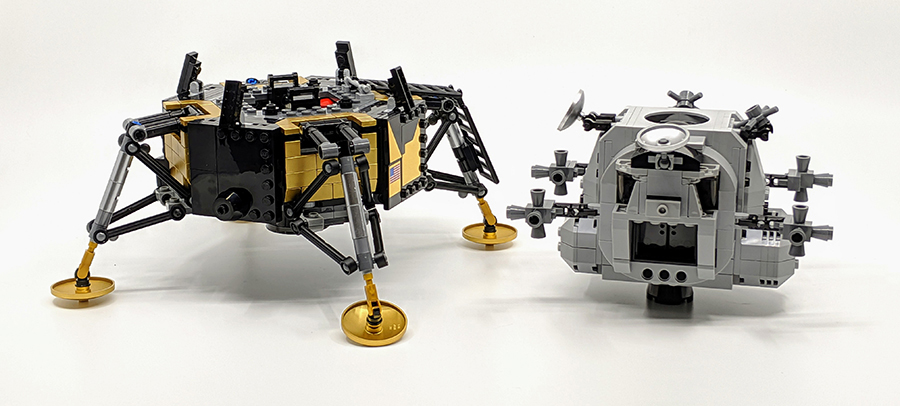
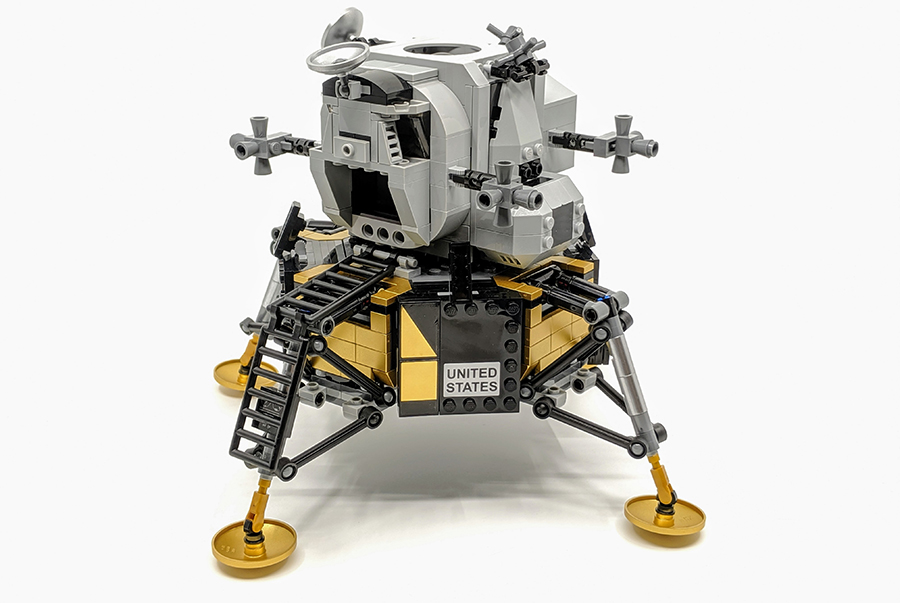
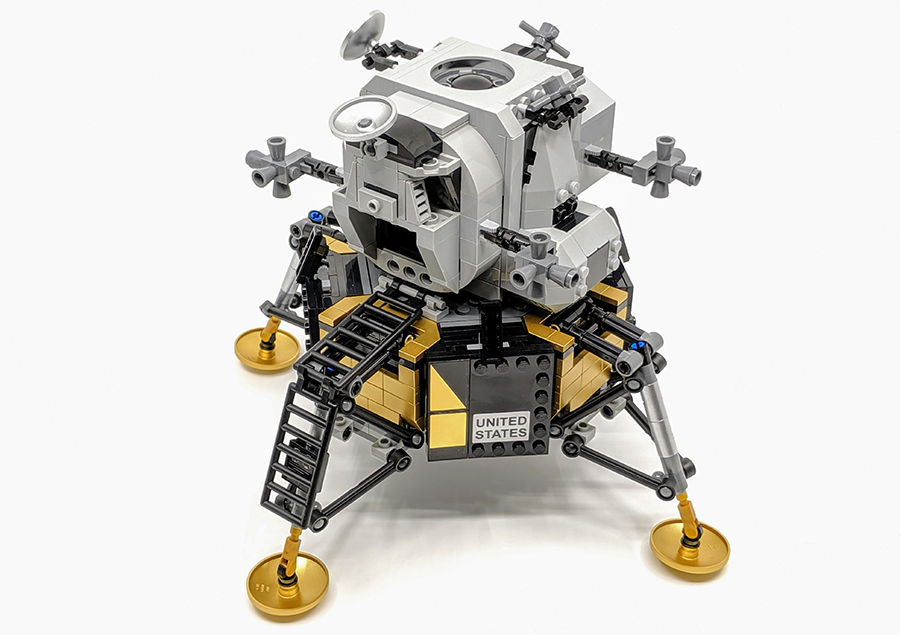
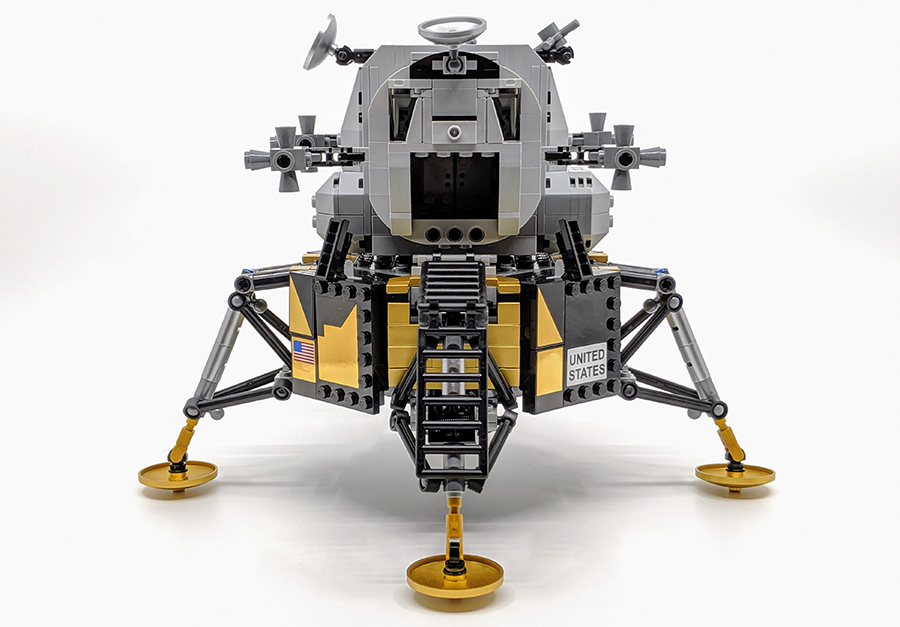
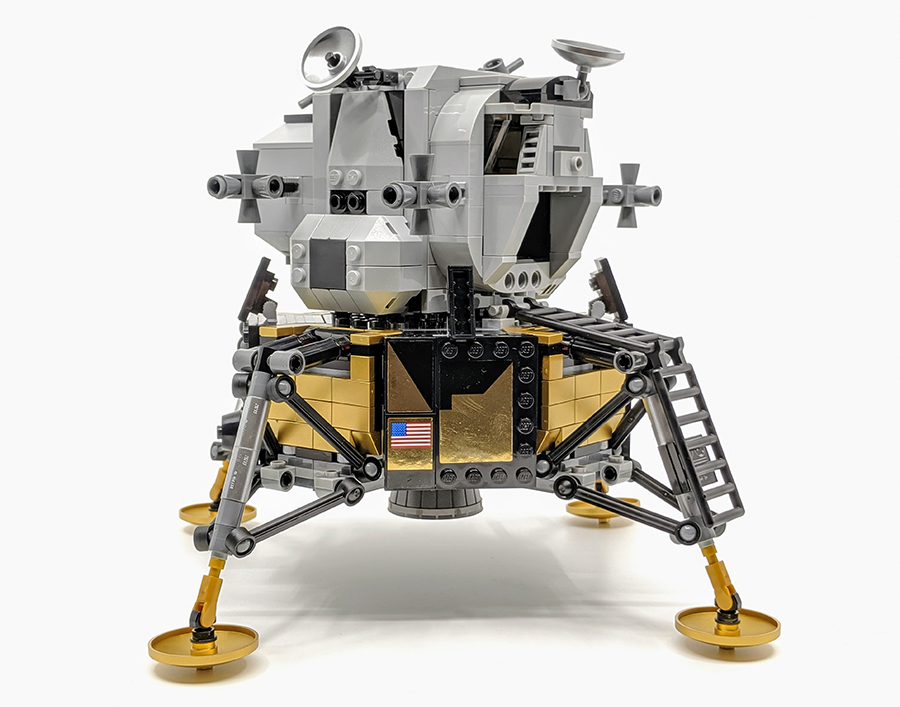
All the different sections are fitted together with various connection points. These are stable enough to keep the modular section connected tightly, but not too tightly that it makes it difficult to take apart. In fact all the connections used across all parts of the set are pretty cool. They aren’t something I’ve seen in other sets, but they work so well both in terms of stability and ‘play’ in another words being able to take the sections apart.




Once complete the Lunar Lander can be neatly sat upon on the display base. Although there is not physical clutch connection between the Lander and the base, it sits securely enough. Plus is really helps to tie the whole set together. It didn’t really need the display plate but it really makes the set so much more visually appeasing. This isn’t the first time the Lunar Lander has been recreated with LEGO elements. Most recently a miniature version was included with the Saturn V which you can see below next to the Creator Expert version and in 2003, a Minifigure scale version was released in association with Discovery Channel.


The Minifigures
The set includes two Minifigures, although it’s not specified, it’s safe to assume they represent Commander Neil Armstrong and LEM module pilot Buzz Aldrin. Both Minifigures have the exact same torso and helmets, there only difference between them are their faces. I assume the one with the cheeky grin is Buzz, who is contemplating the future recreation of the U.S. Space Force. The helmet and oxygen pack combination elements has been used on astronaut Minifigures for a number of years. Which in turn are based on those originally worn during the Apollo 11 space walk. Sure they aren’t a perfect match, but offer the nearest look to the real Apollo spacesuits.The torsos are minimal but also match those worn by Armstrong and Aldrin. They also feature the NASA logo. The Minifigures are a decent enough recreation of the brave adventurers you went above and beyond to explore the universe around us and they look quite cool in the overall display of the set.
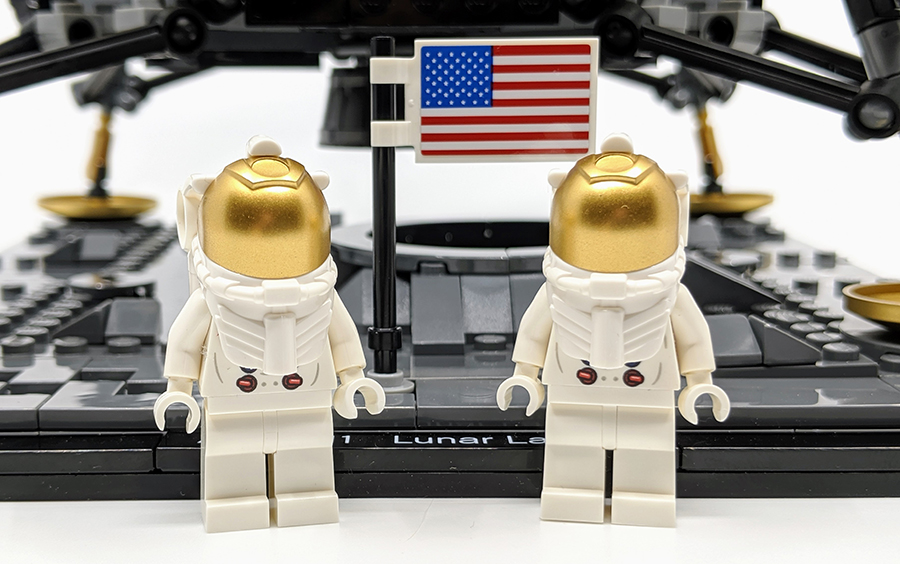
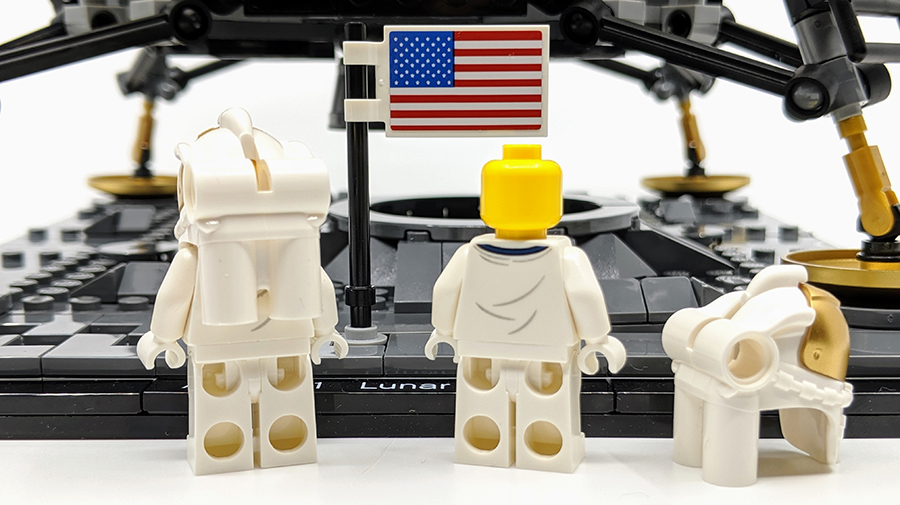
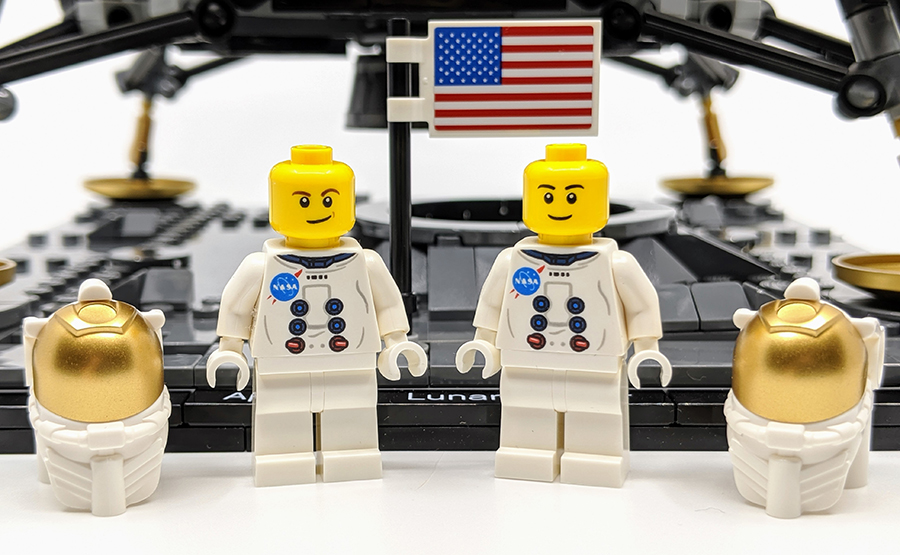
Overall
It may not have the spatial impact of the Apollo 11 Saturn V but it just a culturally important. I’d even say it makes for a better display piece than the Saturn V. I like that it has been designed to mimic the modular nature of the actual Lunar Lander. This not only makes the set an interesting build, it could also be considered an educational tool. The actual Lunar Lander isn’t the most aesthetically pleasing design but when combined with the Minifigures and the awesome display base, this LEGO version is a uniquely intersting set. It’s not the LEGO Space most fans are longing for, but it is one of those sets, like the Saturn V, which will have a reach far beyond the average LEGO fan. A special mention must finally go to the sets instruction booklet, this features the story of the Apollo 11 mission to the Moon and a bit of background behind the sets creation. There are also various facts dotted along the build. All of which add to the overall build experience of the set. All in all this set is a great way to commemorate the Eagle Lunar Lander module completing mankind’s first successful moon landing 50 years ago.
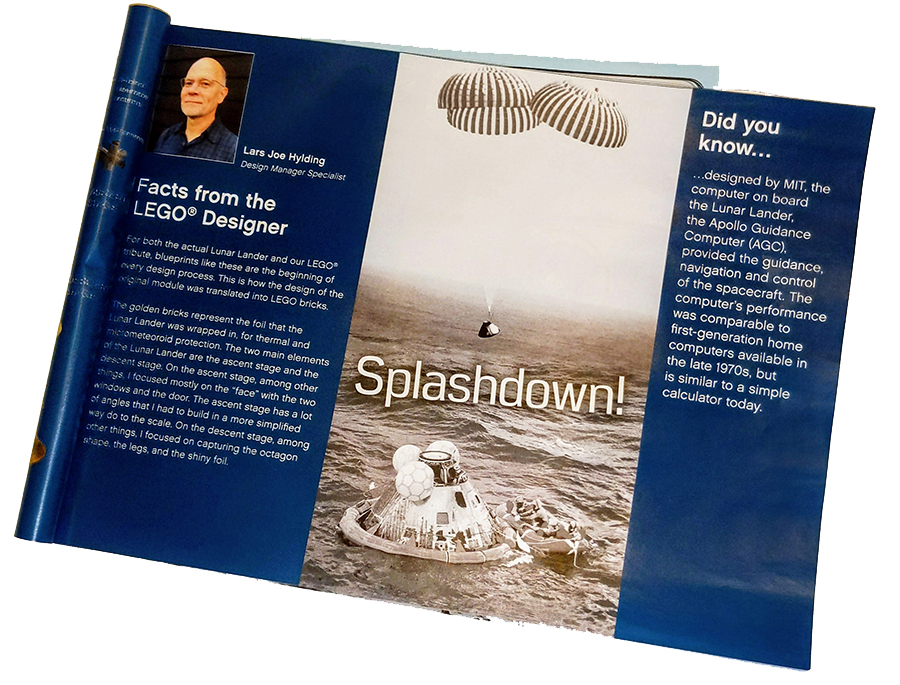
This set was provided to BricksFanz by the LEGO Group for purposes of review. The thoughts within this review are that of BricksFanz and do not reflect those of the LEGO Group or NASA. Providing the set for free, does not guarantee a favourable opinion of the set.








